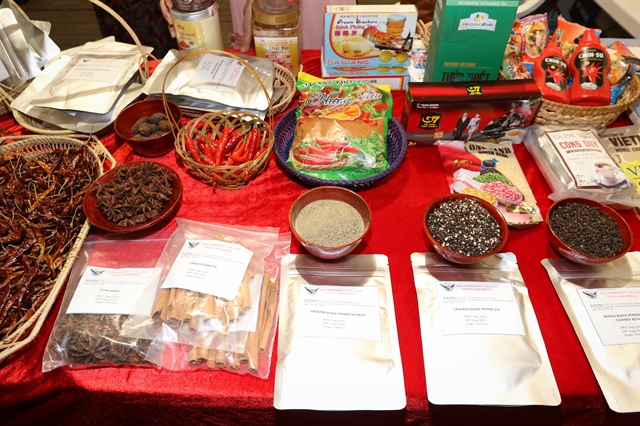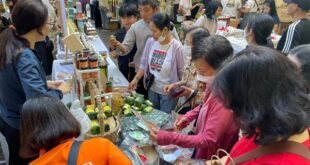
HCM CITY — Despite facing stiff competition, Vietnamese spices are increasing their presence in demanding markets around the world as businesses take advantage of free trade agreements and adopt advanced technologies.
Vũ Kim Hạnh, chairwoman of the Business Association of Vietnamese High Quality Products, said localities and firms in the spices and seasoning industry had devised production recovery plans, turned to advanced technologies, diversified products, and capitalised on recent free trade agreements Việt Nam has signed to bolster exports once COVID-19 is brought under control.
According to the Trade Promotion Agency, Việt Nam’s agricultural sector and the spices and seasonings industry have enjoyed a remarkable transition, turning the country into a global supplier of those products.
Trade promotions and technical support have helped firms surmount difficulties and develop by producing more added value items, according to Hạnh.
Vietnamese firms have also worked to gradually meet more stringent requirements by foreign partners, and are able to provide high-quality and safe added value products.
Among Vietnamese spices, peppercorn has gained a foothold in the international market and accounts for a lion’s share of exports.
Demand for peppercorn and other spices is on the rise while global exports have been declining due to the ongoing COVID-19 pandemic, whose fallout includes skyrocketing logistics fees.
Dh Foods Joint Stock Company has signed a deal with the US’s Heritage Beverage Company making it the exclusive distributor of its speciality spices in that country, and plans to ship 10 containers this year starting in the third quarter.
Its general director, Nguyễn Trung Dũng, hopes that Heritage will help his company conquer the Asian food market in the US, which is valued at US$40 billion and serves 30 million people of Asian origin, including three million from Việt Nam.
It is estimated that more than 80 per cent of supermarkets have Asian food stalls.
Saudi Arabia is one of the largest importers of Vietnamese spices.
The Middle Eastern nation consumes many kinds of spices, mainly imported, including from Việt Nam.
But Middle Eastern people have a habit of seeing, touching and feeling products before ordering them, and so businesses should send samples to customers first.
They should also send their goods to the Trade Office for display at the showroom for Việt Nam’s export staples.
Bùi Trung Thướng, Việt Nam’s trade counsellor in India, said that country’s annual imports of flavourings and spices were worth $1.4 billion, with pepper accounting for $120 million. But only $20-30 million worth of pepper was imported from Việt Nam, he said.
To increase exports to India, he said businesses should step up the use of technology and study the spices from other countries available in the market to make products that better meet the tastes of customers.
With its tropical weather and diverse range of eco-systems, Việt Nam is rich in spices, including many special and popular ones such as cinnamon, anise, pepper, cardamom, and chilli.
It is one of the leading exporters of a number of spices such as peppercorn, of whose global exports it accounts for a whopping 90 per cent.
Vietnamese products are becoming better thanks to improved technology at all stages from cropping and harvesting to processing and packaging. — VnExpress News
- Reduce Hair Loss with PURA D’OR Gold Label Shampoo
- Castor Oil Has Made a “Huge” Difference With Hair and Brow Growth
- Excessive hair loss in men: Signs of illness that cannot be subjective
- Dịch Vụ SEO Website ở Los Angeles, CA: đưa trang web doanh nghiệp bạn lên top Google
- Nails Salon Sierra Madre
 VnExpress News The News Gateway of Vietnam
VnExpress News The News Gateway of Vietnam




